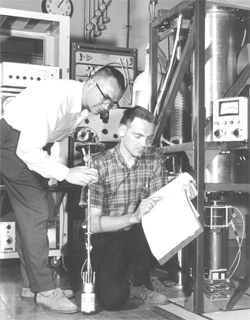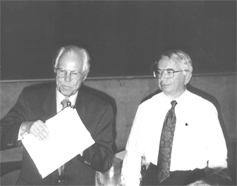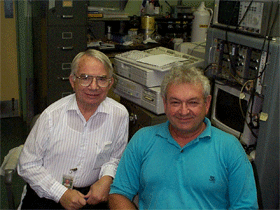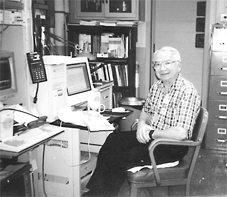Dr. R. Dean Taylor has spent most of his professional career working on various aspects of the Mössbauer effect (ME). At Los Alamos National Laboratory, the huge initial enthusiasm for this new discipline in the early 1960s dwindled, until by the 1970s Dean was the only staff member left pursuing ME research. From the mid-1960s until his retirement in 1990, he benefited from an almost continuous series of able post-doc collaborators and students. An even bigger impact on his activities began in 1983, with his active collaboration with Professor Moshe P. Pasternak of Tel Aviv University, a collaboration that continues even now. Retirement has not interrupted Dean’s work at Los Alamos. A 30-year career in ME has been followed by 13 years as a non-salaried consultant, with the Laboratory providing a lab and taking care of all necessary expenses for sources, supplies, travel, and visitors.
This site is supervised by Mössbauer Effect Data Center, Dalian Institute of Chemical Physics, Chinese Academy of Sciences, 457 Zhongshan Road, Dalian 116023, China. Contact email: medc@dicp.ac.cn


 Dean Taylor (left) and the late W. A. Steyert with one of the first Westinghouse superconducting magnets used for Mössbauer studies (1963).
Dean Taylor (left) and the late W. A. Steyert with one of the first Westinghouse superconducting magnets used for Mössbauer studies (1963).
 Professor R. L. Mössbauer (left) after introduction by Dean Taylor at ICAME '93 in Vancouver, Canada.
Professor R. L. Mössbauer (left) after introduction by Dean Taylor at ICAME '93 in Vancouver, Canada.
 Dean Taylor (left) and Professor Moshe Pasternak of Tel Aviv University pose in Taylor's lab at LANL.
Dean Taylor (left) and Professor Moshe Pasternak of Tel Aviv University pose in Taylor's lab at LANL.
